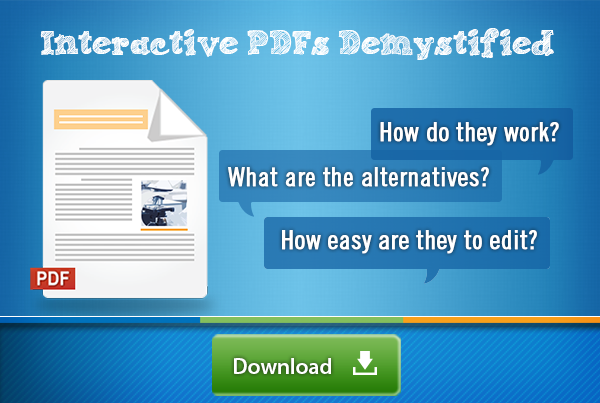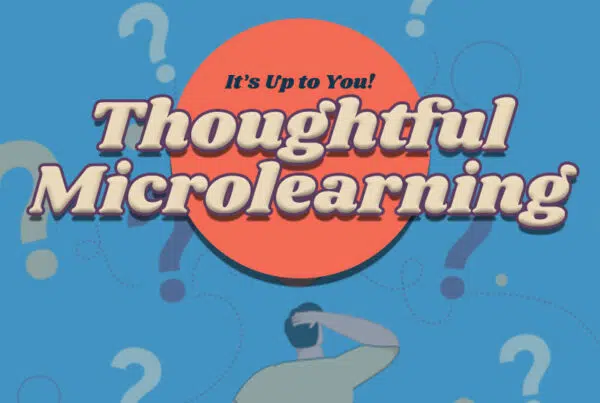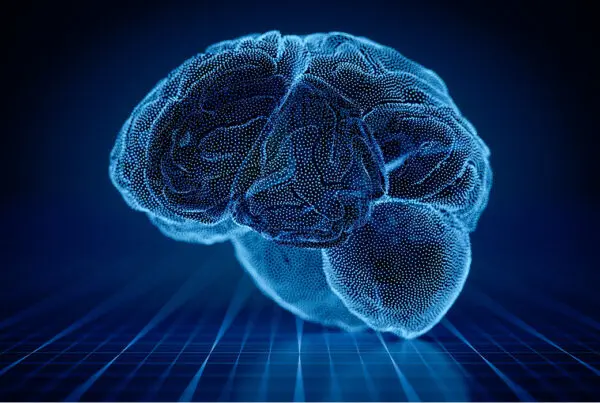Learning may be thought of as a progressive, upward spiral, with each turn of the spiral encompassing several different steps. Learners gather information, reflect upon it, use it in some way, and are typically tested on it. Each of these learning steps stimulates a different part of the brain, including the sensory cortexes, the temporal lobe, and the pre-frontal cortex. The best learning and retention happen when multiple parts of the brain are engaged in the learning spiral.
It’s only been in the last 30 years or so that neuroscientists have realized how “plastic” the adult brain is. In fact, the cycle of learning creates new and sometimes lasting physical connections in the brain. The more regions of the brain that are engaged in learning, the more powerful and long-lasting the learning is. Learning that “sticks” causes a true change in performance and behavior.
What this demands from the trainer is putting in some extra effort up front, but the long-term outcome is better efficiency because what is learned is learned more deeply, so the learner is more likely to apply new information or skills on the job. And fortunately, eLearning offers wonderful flexibility for stimulating the senses in different ways.
Prioritization as a Critical Learning Design Step
Because pharmaceutical reps are required to learn and be able to use such massive amounts of information, it can be tempting to try to shoehorn as much information as possible into learning modules. However, quality of learning and retention depend on prioritizing quality over quantity. Prioritization is essential to ensure that your training investment has the best return, and that time and resources aren’t wasted on tangential materials or learning modalities that are less effective. Again, it’s a matter of taking the time up front to prioritize and ensure that learning is a multi-sensory experience that covers the most important concepts.
Prioritization, providing multi-sensory learning, and being certain to engage all steps in the learning spiral help you train pharma reps as efficiently as possible while being confident that what they’re learning will be retained, and that they can put that learning to use in the field in quickly.
Multi-Sensory Learning and Its Benefits
The use of multi-sensory experiences in learning offers maximum effectiveness because incoming information connects multiple senses. Obviously, you can’t stimulate all senses with every lesson, but you should strive to address sight, hearing, movement, and touch whenever you can in training programs. Historically, the teaching of academic subjects has primarily addressed the visual and auditory systems, but reaching out to the other senses brings multiple benefits.
For one thing, students process information differently. One learner can hear a podcast and understand the content fully, yet not retain information when he reads it on a page or screen. Another learner may lock down learning by acting out a scenario with a teacher or fellow student. What’s more, even students who respond well to traditional visual and auditory learning tend to process information better when they’re able to engage multiple senses.
Each of the sensory systems has its way of enhancing brain function, so it only makes sense that when learning stimulates multiple sensory systems, it is reinforced. Furthermore, essential brain functions like listening skills and conceptualization in general improve, and learners can apply new knowledge sooner and with more skill. Finally, learners are far less likely to be bored or zone out during learning modules if they’re engaged via multiple sensory inputs.
Tips for Addressing All Senses when Training Pharmaceutical Reps
How can the trainer working with pharmaceutical reps incorporate more multi-sensory learning into their programs? It doesn’t have to involve major expense or upheaval. Making sure that your imagery and videos are visually compelling is not only a bulwark against boredom, but provides more effective visual learning. Humans are naturally predisposed to absorbing relevant information that appeals to the sense of sight, and eLearning modules make visual learning materials easier to present.
Immersive audio that allows your learners to “escape” into the subject matter is another way to better engage learners with new materials. Audio learning material should blend seamlessly into other eLearning coursework, and of course well-spoken narration and excellent audio quality are essential. If you can incorporate kinetic activities into your learning modules, you’ll solidify learning even more. One way to do this when training sales reps is to act out various sales scenarios, including objections, questions about data, and exchanges that call for the learner to bring up relevant marketing content on the spot.
Include Time for Reflection, Creation, and Testing
As important as multi-sensory input is for the efficient and effective learning environment, it’s not the entire story. Time for reflection is also important. This is why learning experts have long argued in favor of a short (10-15 minute) break after roughly hour-long learning and study sessions. Physically getting away is ideal, whether that means going for a short walk, or making a trip to the vending machines for a snack. According to Huffington Post, these breaks are necessary for preventing mental stagnation and recouping energy expended learning and studying.
The old axiom “Use it or lose it” applies to learning just as it does to things like building muscle mass. When you were young and your teacher had you use vocabulary words in sentences, it was because owning new information and putting it to use helps you retain it better. “Creative” activities that require your learners to put new information to use (perhaps in a “gamified” learning module where leveling up requires putting new knowledge to use) reinforce new knowledge and skills. And finally, testing is important, because each time you retrieve newly learned information, you strengthen its “memory trace” so it’s retrieved more efficiently in the future.
Multi-sensory learning isn’t just a fad, but a proven technique that allows your learners to absorb information better, develop skills faster, and most importantly, retain information and skills so they can be put to work in real-world situations. It takes more effort to design learning modules that address multiple senses, but that effort pays off in more effective learning and a better training ROI. We invite you to have a look at our areas of training expertise, and let us know if we can help.





